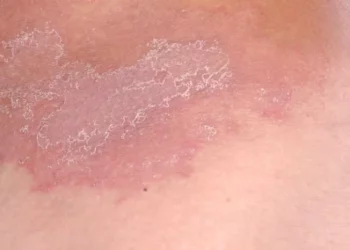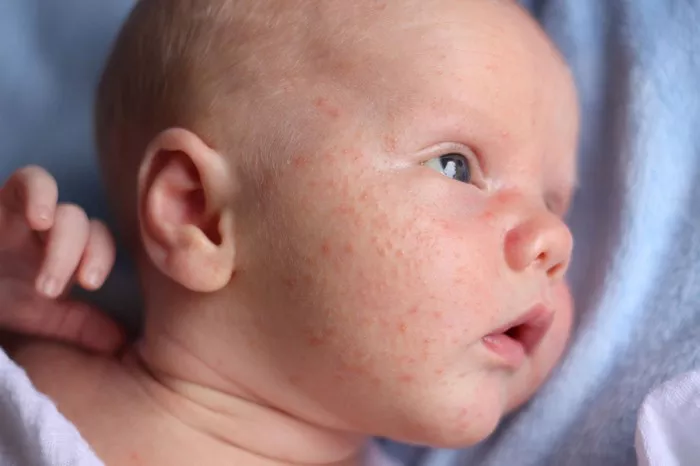Ringworm, despite its misleading name, is not caused by worms. Instead, it is a fungal infection that affects the skin, scalp, or nails. The condition, also known as tinea, can be quite distressing due to its symptoms and the social stigma attached to its appearance. One common question that arises is whether sweat can cause or exacerbate ringworm. This article delves into the relationship between sweat and ringworm, examining the factors that contribute to the development of this fungal infection and how to prevent it.
Understanding Ringworm
Ringworm is caused by dermatophytes, a group of fungi that thrive on keratin, the protein found in skin, hair, and nails. The most common types of fungi that cause ringworm include Trichophyton, Microsporum, and Epidermophyton. These fungi can infect humans and animals, and the infection can spread through direct contact with an infected person or animal, as well as through contact with contaminated objects or surfaces.
Symptoms of Ringworm
Ringworm presents as a red, circular, itchy rash with a clearer or scaly center. The edge of the rash may be raised and may expand outward. In cases of scalp infection (tinea capitis), symptoms can include bald patches, scaling, and even pus-filled sores. Nail infections (tinea unguium) can cause thickening, discoloration, and crumbling of the nails.
The Role of Sweat in Fungal Infections
Sweat itself does not cause ringworm. However, it can create an environment conducive to fungal growth. Here’s how sweat can contribute to the conditions that allow ringworm to thrive:
1. Moisture and Warmth: Sweat creates a warm, moist environment on the skin, which is ideal for fungi. Dermatophytes flourish in such conditions, leading to an increased risk of infection.
2. Skin Maceration: Prolonged exposure to sweat can cause the skin to become soft and macerated. This breakdown of the skin barrier makes it easier for fungi to invade and establish an infection.
3. Reduced Hygiene: If sweat is not properly managed through regular bathing and changing clothes, it can lead to an accumulation of dirt and dead skin cells. This build-up can provide a breeding ground for fungi.
Risk Factors for Ringworm
While sweat can contribute to an environment that favors fungal growth, several other factors increase the risk of developing ringworm:
1. Personal Hygiene: Poor personal hygiene, including infrequent washing and not changing sweaty clothes, can increase the risk of ringworm.
2. Close Contact: Direct skin-to-skin contact with an infected person or animal can spread ringworm. Sharing personal items such as towels, clothing, or sports equipment can also transmit the infection.
3. Warm and Humid Environments: Living in or frequently visiting warm and humid environments can increase the likelihood of developing ringworm, as these conditions are favorable for fungal growth.
4. Immunocompromised Individuals: People with weakened immune systems, such as those with HIV/AIDS or those undergoing chemotherapy, are more susceptible to fungal infections, including ringworm.
5. Age: Children are more prone to ringworm, particularly scalp infections, due to their close physical contact during play and their relatively weaker immune defenses.
Preventing Ringworm
Preventing ringworm involves reducing the risk factors associated with its development. Here are some strategies to minimize the risk:
1. Maintain Good Hygiene: Regular bathing with soap and water helps remove sweat, dirt, and potential fungal spores from the skin. It is also important to dry the skin thoroughly, especially in areas prone to moisture, such as between the toes and in skin folds.
2. Wear Breathable Clothing: Opt for loose-fitting, breathable fabrics that allow sweat to evaporate. Synthetic materials that wick moisture away from the skin can also help keep the skin dry.
3. Change Out of Sweaty Clothes: After exercising or engaging in activities that cause sweating, change out of damp clothes promptly. Wearing dry, clean clothing reduces the likelihood of creating a moist environment conducive to fungal growth.
4. Avoid Sharing Personal Items: Do not share towels, clothing, hairbrushes, or sports equipment with others. If sharing is necessary, ensure the items are thoroughly cleaned and disinfected.
5. Keep the Environment Clean: Regularly clean and disinfect surfaces and objects that may come into contact with skin, such as gym equipment, shower floors, and sports gear.
6. Protect Feet in Public Areas: Wear sandals or shower shoes in communal showers, locker rooms, and pool areas to avoid contact with contaminated surfaces.
SEE ALSO: Does Ringworm Hurt When Healing?
Treating Ringworm
If ringworm does develop, prompt treatment is essential to prevent the infection from spreading and to alleviate symptoms. Over-the-counter antifungal creams, lotions, or powders are typically effective for mild cases. These products usually contain active ingredients such as clotrimazole, miconazole, or terbinafine. It is important to follow the application instructions and continue treatment for the recommended duration, even if symptoms improve before the treatment period is complete.
For more severe or persistent cases of ringworm, a healthcare provider may prescribe stronger topical or oral antifungal medications. Oral medications, such as griseofulvin, terbinafine, or itraconazole, may be necessary for widespread infections or infections involving the scalp and nails.
Conclusion
While sweat itself does not directly cause ringworm, it can create favorable conditions for fungal growth. By maintaining good personal hygiene, wearing breathable clothing, and managing sweat effectively, the risk of developing ringworm can be significantly reduced. Understanding the role of sweat and other risk factors in the development of ringworm is crucial for prevention and effective management of this common fungal infection. If ringworm does occur, prompt and appropriate treatment can help clear the infection and prevent its spread.
Related Topics:


























